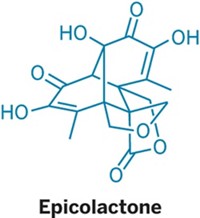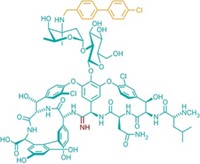Advertisement
Grab your lab coat. Let's get started
Welcome!
Welcome!
Create an account below to get 6 C&EN articles per month, receive newsletters and more - all free.
It seems this is your first time logging in online. Please enter the following information to continue.
As an ACS member you automatically get access to this site. All we need is few more details to create your reading experience.
Not you? Sign in with a different account.
Not you? Sign in with a different account.
ERROR 1
ERROR 1
ERROR 2
ERROR 2
ERROR 2
ERROR 2
ERROR 2
Password and Confirm password must match.
If you have an ACS member number, please enter it here so we can link this account to your membership. (optional)
ERROR 2
ACS values your privacy. By submitting your information, you are gaining access to C&EN and subscribing to our weekly newsletter. We use the information you provide to make your reading experience better, and we will never sell your data to third party members.
Synthesis
First Synthesis Of Platensimycin
Work could ease way to improved analogs of unique antibiotic natural product
by Stu Borman
October 9, 2006
| A version of this story appeared in
Volume 84, Issue 41

Academic researchers have completed the first total synthesis of a racemic version of platensimycin, an antibiotic with a unique mechanism of action, only four months after its discovery was reported.
Platensimycin is the first antibiotic natural product with a new mechanism of action discovered in over 40 years, and the total synthesis could ease access to analogs with improved drug properties.
The discovery of platensimycin was reported just this May by biologist Jun Wang, structural biologist Stephen M. Soisson, and Director of Natural Products Chemistry Sheo B. Singh of Merck Research Laboratories, in Rahway, N.J., and coworkers (Nature 2006, 441, 358; C&EN, May 22, page 7). "Most antibiotics used today fall into four different categories in terms of how they kill bacteria," Singh says, "and platensimycin uses a fifth mechanism-inhibition of fatty acid biosynthesis."
Now, chemistry professor K. C. Nicolaou, grad student Ang Li, and postdoc David J. Edmonds of Scripps Research Institute and the University of California, San Diego, have achieved the first total synthesis of racemic platensimycin (Angew. Chem. Int. Ed., DOI: 10.1002/anie.200603892). The synthesis was carried out by making two key precursors, a carboxylic acid and an aromatic amine, and combining them. Racemic platensimycin would have to be resolved to render the active enantiomeric version of the natural product, but the synthesis nevertheless sets the stage for synthesizing designed analogs with better characteristics than the native compound.
"This expedient total synthesis opens an important chapter in antibiotic research," says assistant professor of chemistry Martin J. Lear of the National University of Singapore, whose group also has been trying to synthesize platensimycin. "The synthetic approach is cleverly planned, and routes to asymmetric variants and designed analogs for drug development look conceivable."
"The approach is very concise," Singh says. "It confirms the structure we proposed, and it provides avenues for building in modifications that couldn't be made by chemically modifying the natural product."







Join the conversation
Contact the reporter
Submit a Letter to the Editor for publication
Engage with us on Twitter